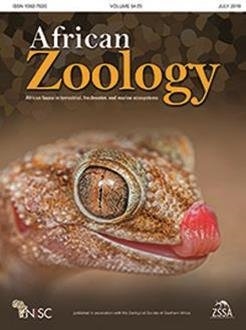Southern Africa contains a diverse and endemic scorpion fauna, but with biological aspects remaining largely unexplored for this group. In order to gain biological insights into an understudied scorpion species, the current study investigates fine-scale spatial distributions and sexual dimorphism in the South African endemic Drab Thick-tail Scorpion (Parabuthus planicauda). The species closely track rocky areas, with the sexes homogenously distributed across habitats. Varying adult sex ratios are evident at each sampling area, likely influenced by differing vegetation cover and predation pressures. When considering size-corrected measurements, several characters are significantly sexually dimorphic in P. planicauda; this sexual dimorphism is not readily observable (<10% difference in size) based on uncorrected measurements, thereby rendering the identification of males and females in the field difficult. Even so, sexually dimorphic characters in females appear to be shaped mainly by natural selection (e.g. carapace width, pedipalp patella and metasoma), likely for enhanced feeding ability, fecundity, parental care and juvenile survival. In contrast, the male morphology may be primarily subject to sexual selection pressures on features used during courtship and mating (e.g. pectines, chela movable finger, pedipalp femur, 2nd and 4th legs). Taken together, the results reported on here add novel preliminary information on the understudied biological aspects of a South African endemic scorpion species.
How to translate text using browser tools
21 September 2020
Describing Sexual Dimorphism and Fine Scale Spatial Distributions in the Drab Thick-Tail Scorpion, Parabuthus planicauda
Jacobus H Visser,
Sjirk Geerts
ACCESS THE FULL ARTICLE
<
Previous Article
|

African Zoology
Vol. 55 • No. 3
October 2020
Vol. 55 • No. 3
October 2020
Buthidae
Fynbos Biome
lithophilous
morphology
rupicolous
sexual selection
South Africa





